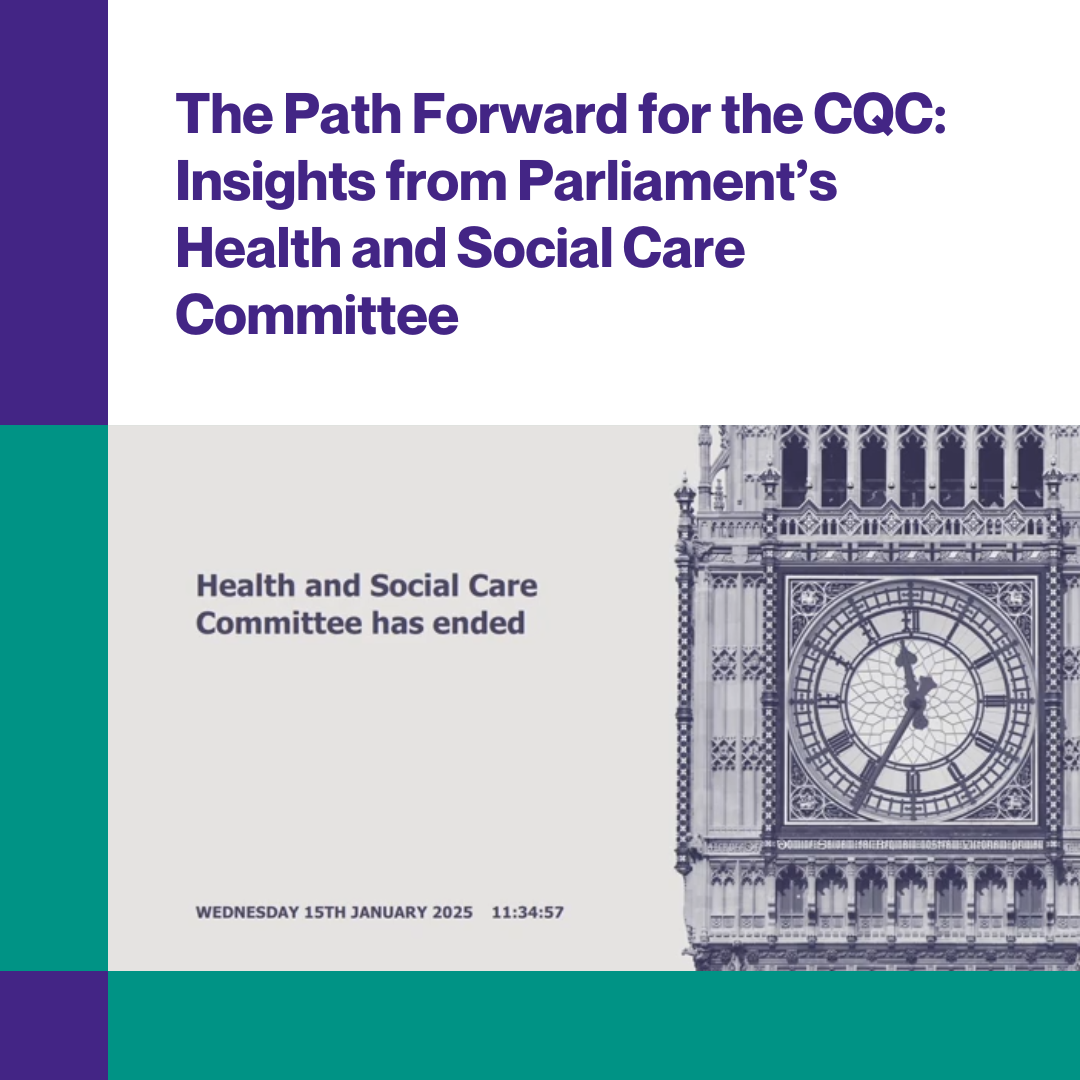On Wednesday, 15 January, the outgoing Chair of the Care Quality Commission (CQC), Ian Dilks, and the newly appointed CEO, Sir Julian Hartley, presented to the Health and Social Care Committee in Parliament. The session focused on addressing the findings of Dr Penny Dash’s review into the operational effectiveness of the CQC and exploring what went wrong.
Sir Julian Hartley outlined two key priorities for the CQC moving forward:
- Increasing the Number of Assessments: The CQC completed only 2,500 assessments last year, a significant reduction compared to previous years. Increasing this figure is a top priority.
- Reducing the Backlog of Registrations: There is currently a substantial backlog in new registrations, which the CQC is working to address.
Challenges with Regulatory Software
Sir Julian acknowledged that poor product design and development had severely hampered the CQC’s new regulatory software. The platform failed to launch successfully, leading to significant operational issues. One critical failure was that assessors were unable to publish reports. To address this, the CQC has implemented an interim workaround that allows for the immediate publication of assessment and reassessment reports while the platform issues are being resolved.
Additionally, the software has been deemed unsuitable for handling new registrations. As a result, the CQC has abandoned its use for this purpose, opting instead to increase staff numbers to tackle the backlog. A revised process has also been introduced to improve efficiency in managing new registrations.
Criticism of the Single Assessment Framework (SAF)
The committee expressed concerns about the implementation of the new Single Assessment Framework (SAF), labelling it a failure. Feedback indicated that the criteria for achieving a ‘Good’ rating are unclear, creating confusion for providers. The SAF’s 34 quality statements have been criticised for being overly broad and lacking specific guidance on what constitutes ‘Good’.
Sir Julian’s team is currently reviewing the SAF, including considering whether regulation for health and social care should be split to better meet the distinct needs of these sectors. A key focus of the review is incorporating clearer guidance and defining ‘Good’ with greater precision. Patient feedback has been highlighted as an essential element in this process, with plans to place greater emphasis on listening to and integrating this feedback into the assessment framework.
Immediate Steps Towards Improvement
Under Sir Julian’s leadership, the CQC aims to:
- Increase the Volume of Assessments: The immediate goal is to raise the number of completed assessments to pre-existing levels and beyond
- Address the Registration Backlog: Additional staff and improved processes will help expedite the registration of new providers.
- Resolve Regulatory Software Issues: The organisation is focused on rectifying the flaws in its platform, ensuring it can support the CQC’s regulatory functions effectively in the future.
- Enhance Clarity in the SAF: A thorough review of the framework is underway to provide clearer guidance for providers and ensure the quality statements are actionable and meaningful.
The appointment of Sir Julian Hartley marks a period of significant reform for the CQC. The organisation is focused on resolving its operational challenges, restoring confidence in its regulatory processes, and providing greater clarity for providers regarding compliance expectations. By addressing these issues, the CQC aims to strengthen its role in ensuring the quality and safety of health and social care services in England.
How MOA Benchmarking Can Help
MOA Benchmarking offers an end-to-end Quality Management System specifically designed to support providers in meeting the Single Assessment Framework (SAF). Key features include:
- Targeted Audits: Our audits are tailored to demonstrate evidence against the SAF, ensuring providers are fully prepared for regulatory assessments.
- Feedback Mechanisms: Surveys designed to gather insights from clients, staff, and families provide invaluable data on whether ‘Good’ is being delivered—an area highlighted by Sir Julian Hartley as critical.
- Comprehensive Benchmark Reporting: Providers can measure their performance against peers and industry standards, identifying areas for improvement.
- Incident and Feedback Management: Our Incident Management System and Feedback and Complaints Module enable structured, actionable approaches to addressing issues and incorporating lessons learned.
- Quality Indicators: These tools offer measurable benchmarks to monitor and enhance service delivery continuously.
- Wholistic improvements: All these features are seamlessly integrated into our Continuous Improvement Plan, offering a comprehensive and transparent view of the organisations quality improvement requirements. This integration ensures clarity in identifying issues and enables the efficient execution of corrective actions, fostering a proactive approach to sustained quality improvement
If you’d like to have a look at the Health and Social Care Committee meeting yourself, follow this link – Parliamentlive.tv – Health and Social Care Committee
Grant Lewis, MOA Benchmarking UK Regional Manager

